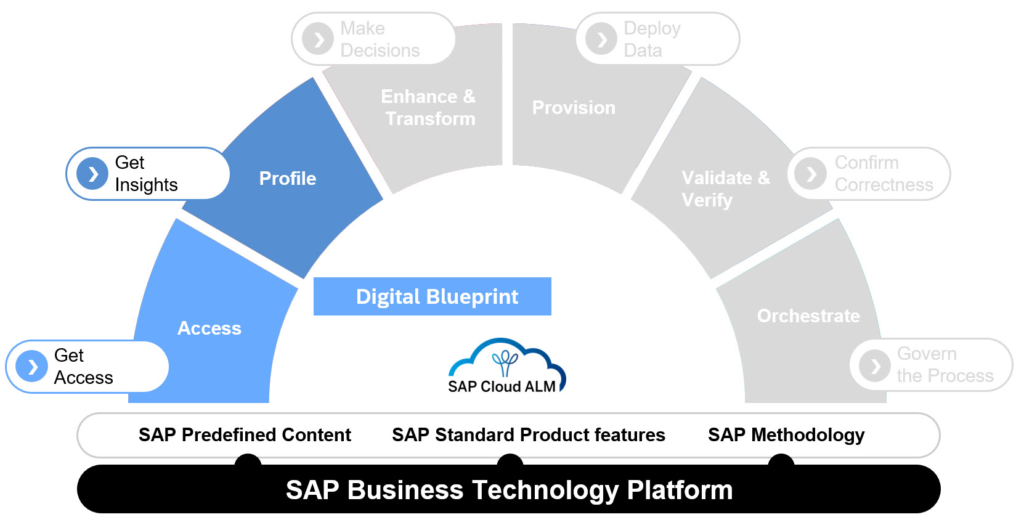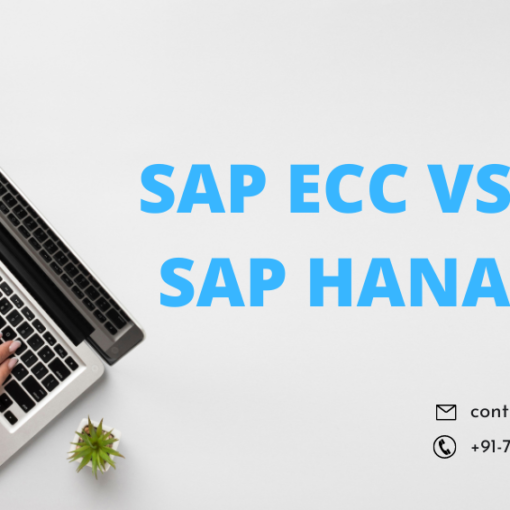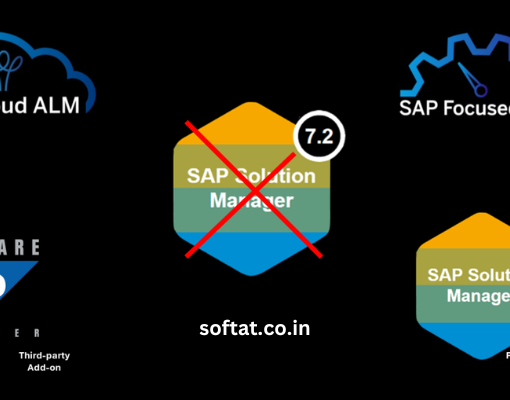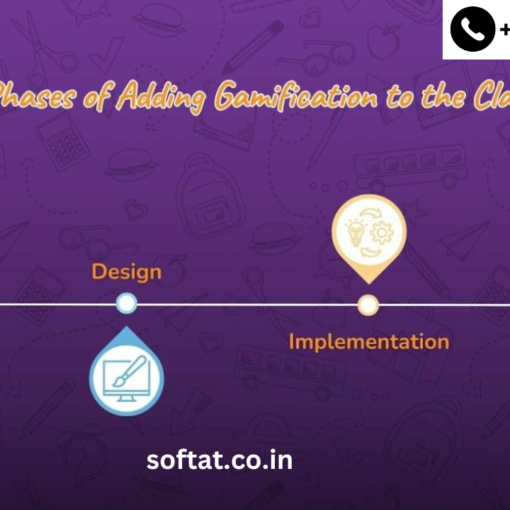SAP S/4HANA Adoption: Transforming Business Operations for the Digital Age

As organizations endeavor to remain cutthroat in an undeniably computerized world, taking on cutting edge innovations has become fundamental. Quite possibly of the main change in big business programming is the progress from heritage SAP ERP frameworks to Drain S/4HANA — SAP’s most recent age of big business asset arranging (ERP). S/4HANA offers various advantages, including ongoing information handling, worked on information models, and improved client experience, pursuing it an engaging decision for associations looking to smooth out activities and empower computerized change.
In this blog, we’ll investigate the significance of taking on SAP S/4HANA, the difficulties in question, and methodologies to change to this strong stage effectively.
What is SAP S/4HANA?
SAP S/4HANA (SAP Business Suite 4 SAP HANA) is an incorporated ERP suite based on SAP’s exclusive HANA (Elite Execution Insightful Machine) data set. Not at all like conventional ERP frameworks that depend on plate based data sets, S/4HANA use in-memory figuring, empowering continuous examination and handling. With worked on information structures and an instinctive Fiori-based UI, S/4HANA is intended to address the issues of the present computerized ventures.
Key Features of SAP S/4HANA
- In-Memory Registering: Quick information handling for continuous experiences.
- Worked on Information Model: Diminished information overt repetitiveness and smoothed out tables.
- Client Driven Plan: Fiori UX for a customized, job based insight.
- High level Examination: Implanted investigation for information driven navigation.
Real-Time Data Processing
One of the characterizing benefits of S/4HANA is its capacity to handle information continuously. This capacity empowers associations to dissect information and pursue informed choices right away, further developing responsiveness and nimbleness.
Simplified Data Model
S/4HANA’s worked on information model lessens the requirement for complex information structures, which can save assets and further develop execution. By dispensing with repetitive tables and files, organizations experience quicker information recovery and decreased stockpiling costs.
Enhanced User Experience with Fiori
SAP Fiori gives a natural, responsive client experience with job based interfaces. Representatives can get to the information they need through tweaked dashboards, decreasing preparation time and upgrading efficiency.
Improved Financial Management
S/4HANA’s monetary module offers continuous bookkeeping and monetary detailing abilities, empowering organizations to deal with their funds with more prominent exactness and control. Highlights like the General Diary consolidate monetary and the board bookkeeping in a solitary information source, working on compromises and reviews.
Greater Integration with Emerging Technologies
SAP S/4HANA incorporates consistently with computer based intelligence, AI, and IoT advancements, permitting associations to really develop and robotize processes. For instance, prescient examination can expect request, while IoT sensors can screen resources progressively.

Challenges in SAP S/4HANA Adoption
Regardless of its benefits, embracing SAP S/4HANA can introduce difficulties that associations need to address proactively.
Cost and Budget Constraints
Moving to Drain S/4HANA requires a huge interest in programming, equipment, and work force. Organizations might have to change their spending plans or track down ways of improving expenses to deal with the relocation cycle.
Data Migration Complexity
Moving information from inheritance frameworks to S/4HANA can be intricate, especially for associations with enormous, unstructured datasets. Guaranteeing information precision and consistency during movement is fundamental to forestall interruptions.
Skills and Training Requirements
S/4HANA’s high level elements require particular abilities that current groups might need. Putting resources into preparing or recruiting new ability is many times important to completely use S/4HANA’s capacities.
Change Management
Transitioning to a new ERP system can be disruptive for employees accustomed to legacy systems. Effective change management practices are essential to facilitate adoption and reduce resistance among users.
Benefits of SAP S/4HANA Adoption
Organizations that have adopted SAP S/4HANA have realized a wide range of benefits. Here are some key advantages of transitioning to SAP S/4HANA:
- Improved Real-Time Analytics and Reporting:
- SAP S/4HANA’s in-memory processing allows businesses to analyze data in real time. This means decision-makers can access accurate and timely information without delays, enabling more proactive and informed decision-making. Real-time reporting across various departments, such as finance, procurement, and operations, also improves operational efficiency.
- Faster Decision-Making:
- With the ongoing capacities of SAP S/4HANA, associations can diminish idleness and accelerate independent direction. In areas like retail, assembling, and coordinated factors, this can be a unique advantage, empowering organizations to respond to changing economic situations, client requests, or production network disturbances right away
- Streamlined Operations
- SAP S/4HANA interfaces different business processes, empowering smoothed out activities across the endeavor. Works like acquirement, deals, stock administration, and HR are incorporated inside similar framework, further developing correspondence among divisions and disposing of failures brought about by separated processes.
- Better Customer Experience
- SAP S/4HANA’s capacities in coordinating CRM and other client related information empower organizations to convey a more customized client experience. With admittance to a solitary wellspring of truth, organizations can all the more likely comprehend client needs and give custom fitted items and administrations.
Best Practices for a Successful SAP S/4HANA Adoption
While there are challenges, businesses can take steps to ensure a successful SAP S/4HANA adoption. Here are some best practices:
- Develop a Clear Roadmap
- Prior to executing SAP S/4HANA, associations ought to characterize their goals and make an unmistakable guide for the relocation. This guide ought to frame achievements, timetables, and the distinct advantages required for each period of the undertaking.
- Choose the Right Deployment Model
- SAP S/4HANA offers a few organization models, remembering for reason, cloud, and cross breed choices. Organizations ought to pick the arrangement model that lines up with their business needs, specialized necessities, and spending plan. Cloud organizations will quite often offer greater adaptability and versatility, while on-premise arrangements offer more control.
- Ensure Data Quality and Cleanliness
- Data migration is a critical step in the SAP S/4HANA adoption process. To ensure a smooth transition, businesses should clean and validate their data before migrating it to the new system. This will help avoid issues with data integrity and accuracy post-migration.
- Invest in Training and Support
- Training your team is key to ensuring the success of SAP S/4HANA adoption. Provide comprehensive training for employees on the new system and offer ongoing support to ensure they can effectively navigate and utilize the software.
- Manage Change Effectively
- SAP S/4HANA reception frequently includes tremendous changes to business processes. Convey the advantages of the new framework to representatives right off the bat and include them in the change cycle. This will decrease obstruction and guarantee a smoother progress
Real-World Case Studies of SAP S/4HANA Adoption
Many organizations across various industries have successfully adopted SAP S/4HANA and experienced significant improvements in their operations. Here are a few examples:
- Siemens
- Siemens, a worldwide forerunner in modern mechanization and digitalization, embraced SAP S/4HANA to smooth out its tasks. By utilizing continuous examination and worked on processes, Siemens had the option to further develop its production network proficiency and better deal with its worldwide tasks.
- Unilever
- Unilever, one of the world’s biggest customer products organizations, moved to Drain S/4HANA to coordinate its worldwide inventory network and money tasks. The move empowered Unilever to accomplish more noteworthy perceivability, further developed direction, and decreased functional expenses.
Conclusion
Taking on SAP S/4HANA is a huge step towards accomplishing computerized change. Its high level elements, ongoing handling, and smoothed out information the board make it ideal for associations looking to modernize their tasks and remain serious in a quickly developing business sector. While challenges like expense, intricacy, and preparing prerequisites exist, a very much arranged procedure can make the progress smoother and more successful.
You may be interested in:
A Deep Dive into SAP API Management
Integration cloud system to HANA Cloud Platform using Cloud Connector




